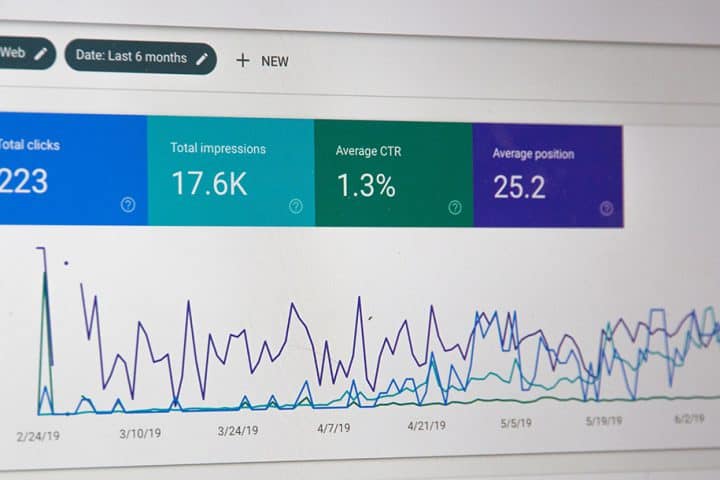Need a social media marketing checklist to cover all the important points?
That’s an excellent idea.
Effective social media marketing can be more difficult than it looks. There’re simply so many things involved in making it work, from content creation to campaign management and tracking.
It could be really difficult to manage everything efficiently without a detailed checklist of what you need to do.
Below, you’ll find the ultimate checklist you need to plan and run your social media marketing campaigns the right way.
Table of Contents
- Create a Social Media Persona
- Set Measurable Goals
- Find Popular Content Topics
- Create Content
- Create a Social Media Content Calendar
- Include User-Generated Content (UGC)
1. Create a Social Media Persona
Every successful social media strategy involves creating content that can help you meet the needs of your target customers. To understand what they actually need, you should create a social media persona.
What is a social media persona?
It’s a representation of your ideal customers whom you want to reach and engage with your content. It includes details about their demographics, interests, goals, pain points, and needs.
Determining this information can help you create relevant and helpful content.
For example, suppose your social media persona is of people who:
- Are millennials
- Love humorous social media content
- Like to engage with interactive content such as surveys and polls
What does it mean to you?
This means that you should create valuable yet humorous content and invite your audience to participate in polls to generate more engagement.
2. Set Measurable Goals
Set clear goals before launching your social media campaigns.
Here are some examples of social media marketing goals:
- To increase your follower count by [xxx] by the end of [month and year]
- To achieve [x%] engagement rate on your content by [month]
- To drive [x%] more traffic to your website from social media
- To get [x] visits to your landing page from Facebook
Keep track of the goals you set at all times.
If you’re looking to increase your website traffic, you can use Google Analytics to track progress.
Go to Acquisition > All Traffic > Channel to see how much traffic you’re getting from your social media campaigns.


3. Find Popular Content Topics
Your audience is constantly looking for information.
But what kind of topics do they prefer?
You can use a content discovery tool such as BuzzSumo to find the most shared articles on social media for specific keywords. It can give you a list of top-performing articles related to your keywords along with the number of social media shares they received.


You can then use this list of topics to get inspiration for your next articles and social media content.
Research more topics that your target audience might be interested in using online forums like Reddit and Quora. You can also check out the social media profiles of your competitors to get more ideas.
How many content topics do you need to start?
I’d say that you should compile a list of at least 50 good topic ideas that you can use for articles, videos, infographics, and other visual content.
4. Create Content
Content is the backbone of your social media strategy. You need to create a lot of engaging, valuable, and shareable content pieces for your target audience.
First of all, you should decide on the types of content you want to leverage.
Here are the most popular social media content formats:
- Interactive content such as polls, quizzes, contests, and Q&A
- Videos about product reviews, industry news, and interviews
- Articles from your blog and other authoritative sites in your industry
- Infographics
- Quotes
- Image and carousel posts
Once you finalize the types of content you want to use, you should start creating them.
You can easily design impressive social media images, infographics, and other visuals by using tools like Canva. There are apps that can help you create high-quality videos as well.
How much content should you create?
You should at least have a backup of content pieces that you can publish for two weeks.
Pro tip: 6 Types of Videos to Boost Your Brand’s Reach
5. Create a Social Media Content Calendar
A social media content calendar defines which content piece you will post and when. However, deciding on posting times isn’t something you should choose randomly.
It’s a known fact that posting your content at certain days and hours can help you generate higher user engagement on social media.
Here are the peak engagements times of different social platforms:
- Facebook: Wednesdays (11 am-12 pm)
- Instagram: Wednesdays (11 am) and Fridays (10 am-11 am)
- Twitter: Wednesdays (9 am-11 am) and Fridays (9 am-11 am)
- LinkedIn: Wednesdays (8 am-10 am), Thursdays (9 am and 1 pm-2 pm), and Fridays (9 am)
Though these posting times don’t guarantee that your content will generate maximum engagement, you should experiment with your posting times. You can start posting your content at these hours and adjust your strategy based on the results you get.
To make it easier, you can use social tools to schedule and automate posting and measure engagement.
6. Include User-Generated Content (UGC)
You should also feature user-generated content (UGC) on your social media profiles.
In addition to the content you prepare, always have a spot for customer testimonials and reviews. These are very powerful content pieces that can help you improve your credibility and build trust.
For example, 85% of Instagram users consider UGC to be more trustworthy than branded content.


To encourage people to create UGC for your brand, you can run hashtag-specific campaigns, asking your followers to share their experiences with you.
Pro tip: 8 Tactics to Earn Your Customers’ Trust and Improve Brand Loyalty
Social Media Marketing: Where to Start?
Go through each of the social media marketing tactics in this checklist to ensure that you’ve covered it all. You can start posting and generating engagement on your content.







